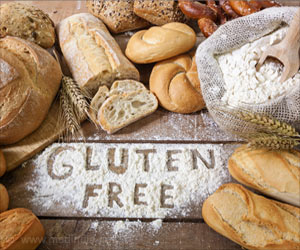Oncologists have used drugs called TOP2 poisons that harness TOP2's DNA-cutting activity to damage DNA and kill cancer cells.

‘Several structures of the DNA-bound structure have been solved in an attempt to understand both the chemical mechanism for DNA cleavage and the structural basis for inhibition of topoisomerase by antibacterial poisons.’





A physician-researcher and a biologist specializing in RNA have teamed up to create a novel DNA sequencing tool that identifies specific sites of TOP2 cutting (cleavage) along the entire genome of human leukemia cells. "This tool opens new possibilities to better understand and eventually manipulate TOP2 cutting to prevent the rearrangements that give rise to leukemias," said study co-leader Carolyn A. Felix, MD, a pediatric oncologist at Children's Hospital of Philadelphia (CHOP). Felix, who holds the Joshua Kahan Endowed Chair in Pediatric Leukemia Research at CHOP, focuses on infant leukemia as well as treatment-related or secondary leukemia that may occur as a side effect of TOP2-related chemotherapy drugs. Felix's team has collaborated for the past several years with a team led by biologist Brian D. Gregory, PhD, of the University of Pennsylvania, who uses genome-wide sequencing to catalog the sites on DNA and RNA molecules that are bound by proteins. "We designed a way to pull down the DNA bound to TOP2, then to break that bond so that only the DNA undergoing cleavage is free to be sequenced at single base-pair precision," he said. "This enabled us to map, for the first time, topoisomerase cleavage on a genome-wide scale."
The scientists reported their findings online April 6, 2017 in the journal Genome Research.
For some time, oncologists have used drugs called TOP2 poisons that harness TOP2's DNA-cutting activity to damage DNA and kill cancer cells. But TOP2 poisons are a double-edged sword, because intervening in the cutting and rejoining of DNA can lead to translocations, when DNA strands swap genetic material between chromosomes and rejoin incorrectly. The gene most often rearranged in these translocations in treatment-related leukemia is KMT2A.
Besides their use in chemotherapy drugs, TOP2 poisons occur in the environment and in the diet. Felix and her collaborators have previously shown that a fetus's exposure to naturally occurring TOP2 poisons in the mother's diet during pregnancy is associated with an increased risk of leukemia in infants. Similar to treatment-related leukemia caused by TOP2 poison chemotherapies, KMT2A translocation also is the hallmark abnormality in leukemia in infants. Felix previously developed a method to identify partner genes that fuse with KMT2A to form translocations. This tool pinpoints the exact position of translocation breakpoints.
Advertisement
The researchers found evidence implicating TOP2's cutting role not just in KMT2A translocations in leukemia, but also in other cancer-driving translocations. They write that this discovery raises "the intriguing possibility that TOP2A has a previously unrecognized broader role in triggering translocations."
Advertisement
"The fact that TOP2 cleavage clusters in the same genomic environment alongside histone marks and transcription regulators implicates the TOP2 enzyme as a prominent orchestrator of DNA remodeling," said Felix.
Felix added that the findings open possibilities for new clinical approaches. "The better we identify where cleavage occurs across the genome, the better we can understand how the translocations happen. We could use that knowledge to design smarter anticancer drugs to target the TOP2 enzyme that don't have such a high risk of causing translocations, or we could design drugs to protect sequences in the genome from unwanted cutting."
Source-Eurekalert










